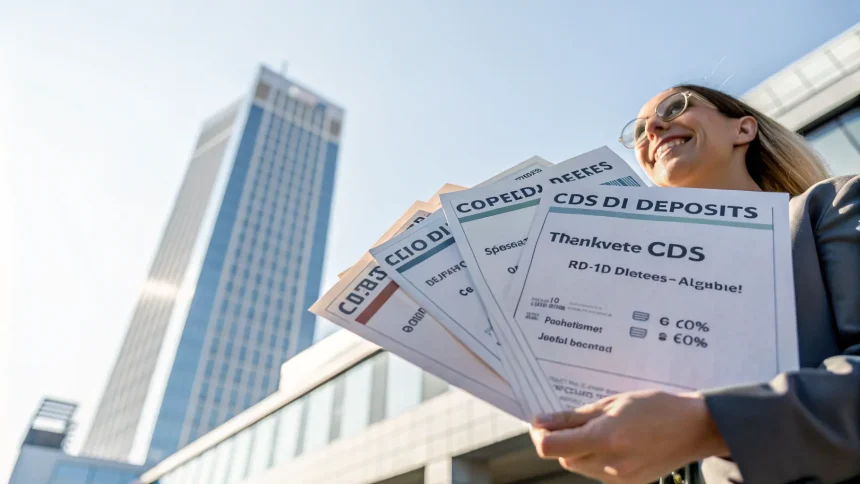Certificate of deposit (CD) rates have climbed significantly, with many financial institutions now offering annual percentage yields above 4%. This represents a notable improvement for savers looking to maximize returns on their cash reserves while maintaining FDIC or NCUA insurance protection.
The current CD rate environment marks a substantial change from the near-zero interest rates that dominated the market in recent years. Financial analysts attribute this shift to the Federal Reserve’s aggressive interest rate hikes aimed at combating inflation.
Current CD Rate Landscape
A survey of the market reveals numerous banks and credit unions competing for deposits by offering attractive rates. Online banks typically lead with the highest yields, often surpassing what traditional brick-and-mortar institutions provide.
For example, several online banks are currently advertising 12-month CDs with APYs between 4.25% and 5.00%, while 5-year terms at some institutions reach as high as 4.50%. These rates significantly outpace the national average, which has also increased but remains lower than these top-tier offerings.
Credit unions have also entered the competition, with some member-owned institutions matching or even exceeding the rates offered by online banks. This competitive environment benefits consumers who are willing to shop around for the best deals.
Considerations for CD Investors
Financial experts recommend that savers consider several factors beyond just the headline rate when selecting a CD:
- Early withdrawal penalties, which can significantly reduce returns if funds are needed before maturity
- Minimum deposit requirements, which vary widely between institutions
- FDIC or NCUA insurance coverage, ensuring deposits are protected up to $250,000 per depositor, per institution
- Rate guarantees for the entire term, protecting against potential market fluctuations
“The current rate environment presents an excellent opportunity for conservative investors,” explains a banking industry analyst. “However, with inflation still running above 3%, savers should recognize that even these improved rates may not fully preserve purchasing power in real terms.”
Strategic Approaches
Many financial advisors suggest CD laddering as a strategy to maximize returns while maintaining some liquidity. This approach involves dividing funds across multiple CDs with staggered maturity dates.
For example, an investor might split $10,000 across five CDs with terms ranging from one to five years. As each shorter-term CD matures, it can be rolled into a new five-year CD, eventually creating a portfolio where one CD matures each year while all earn the typically higher rates of longer-term deposits.
Another approach gaining popularity is the use of no-penalty CDs, which allow withdrawals without fees after an initial lock-up period, typically around seven days. These products often offer rates lower than traditional CDs but higher than standard savings accounts, providing a middle ground between liquidity and yield.
The current high-rate environment may not last indefinitely. The Federal Reserve’s future monetary policy decisions will likely influence CD rates moving forward, with potential rate cuts eventually leading to lower CD yields. This possibility has prompted some savers to lock in today’s rates for longer terms.
For those with cash reserves sitting in low-yield accounts, these 4%+ CD rates represent a significant opportunity to boost interest income while maintaining the safety of FDIC-insured deposits.









